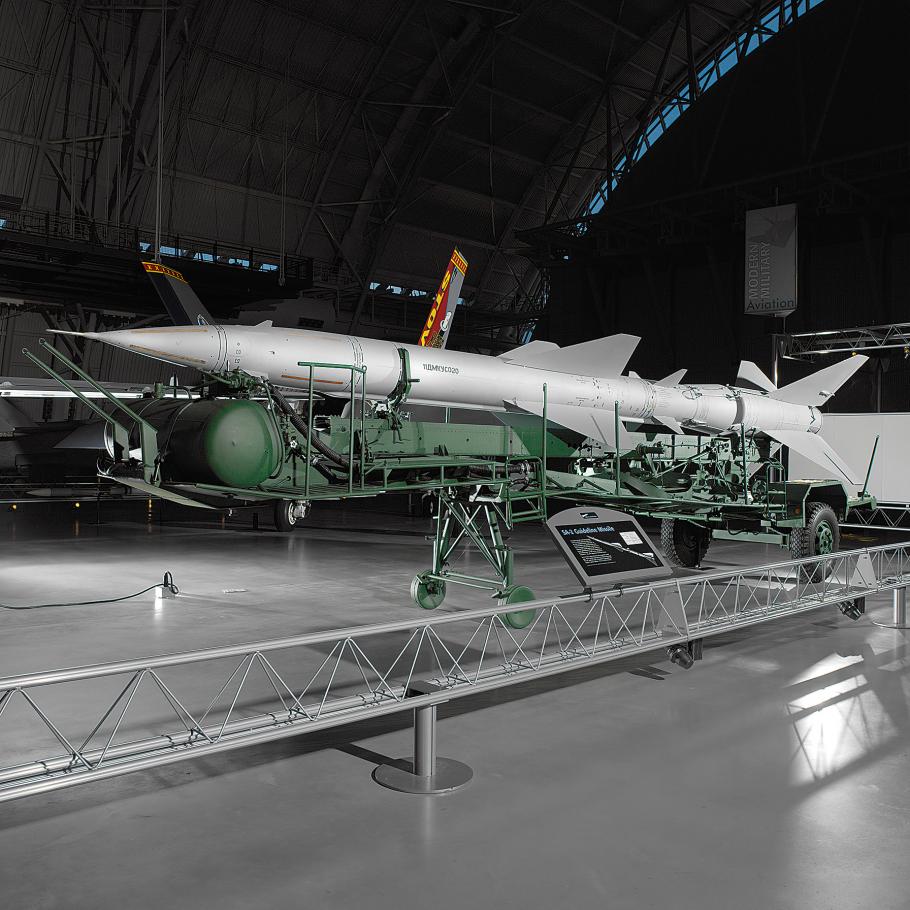Developed by the Soviet Union, the SA-2 has been the most widely used air defense missile in the world. In the Soviet Union it was called the Dvina; in the West it was known by its NATO code name, SA-2 Guideline (SA meaning surface-to-air). SA-2s became operational in 1959 and were acquired by all Soviet client states. In 1960 an SA-2 downed the American U-2 spy plane piloted by Francis Gary Powers.
The SA-2 had a solid-fuel booster and a liquid-fuel second stage. Many countries made their own versions of the missile. This one, meant for export, is mounted on a transporter and required a separate launcher. SA-2s are still in use today. This object was donated to the Smithsonian in 1985 by the U.S. Navy.
Display Status
This object is on display in Cold War Aviation at the Steven F. Udvar-Hazy Center in Chantilly, VA.
Object Details
Country of Origin
Union of Soviet Socialist Republics
Type
CRAFT-Missiles & Rockets
Dimensions
Overall (maximum): 34 ft. 6 in. long x 2 ft. 4 in. diameter x 7 ft. 3 in. wing span(1051.56 x 71.12 x 220.98cm)
Other (sustainer section): 1 ft. 7 in. diameter x 5 ft. 6 in. wing span(48.26 x 167.64cm)
Other (Trailer): 90 in. wide (228.6cm)
Materials
Steel alloys and titanium
Alternate Name
SA-2 Guideline Missile
Inventory Number
A19850424000
Credit Line
Transferred from U.S. Navy
Data Source
National Air and Space Museum
Restrictions & Rights
Usage conditions apply
For more information, visit the Smithsonians Terms of Use.

